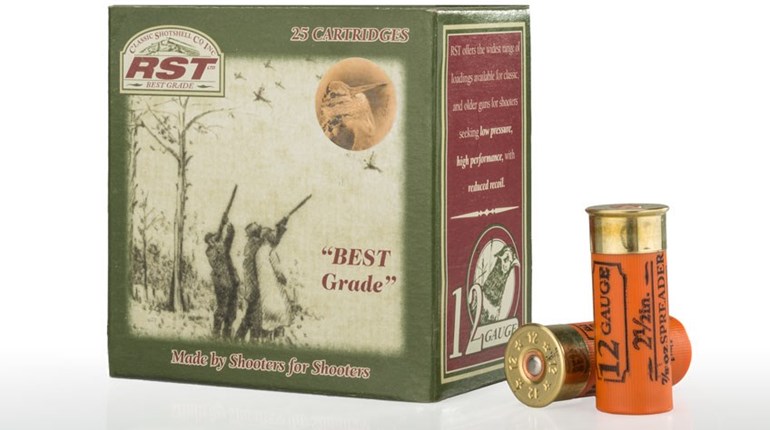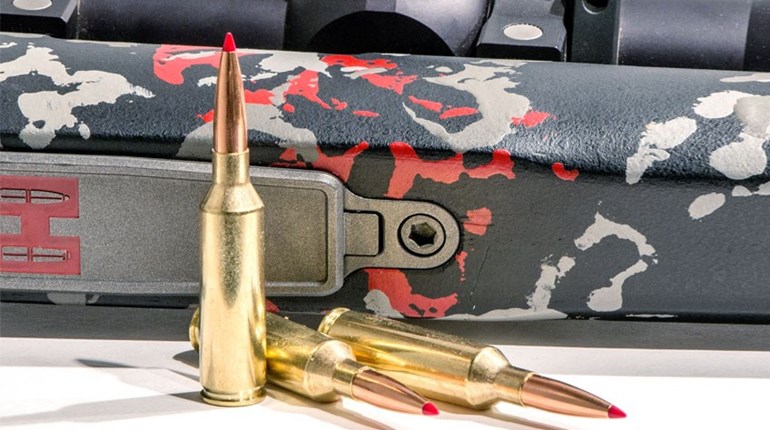
Do you know what the numbers on the top of a shotgun shell box mean? Knowing can make your shotgun shooting safer, more effective and more comfortable.
Generally, the first number on the top of the box identifies the gauge of the shells in the box. Gauge is a measurement of the diameter of the shell case. The shotgun gauges manufactured today are: 10, 12, 16, 20, 28 and .410 bore. The larger the number, the smaller the shell diameter. The gauge of the ammunition must match the gauge of the shotgun which can be found on the shotgun barrel. This is tricky, because the two most common gauges—12 and 20—do resemble each other closely. Never place a smaller gauge shell in a larger gauge shotgun. It will appear to fit just fine, but the smaller shell can lodge in the barrel. If a correctly sized shell is then placed in the shotgun and fired, an extremely dangerous barrel rupture will occur. Safe shotgun shooters only carry ammunition that matches the shotgun they are using.
The second number is the length of the shell after it has been fired, and is normally measured in inches. Most shotguns are chambered for 2¾-inch or 3-inch shells, with some guns being chambered at 3½ inches. Check your gun barrel or owner’s manual to verify what maximum shell length your gun will accommodate. Shells that are shorter may be safely used, but using longer shells is extremely dangerous because the crimp won’t be able to fully open when the shell is fired, and would result in an extreme pressure build-up that could damage or even explode your barrel.
Next, the velocity tells you how fast the shot leaves the muzzle and is usually specified in feet per second (fps). Velocities may range from 1,100 fps to near 1,400 fps. Some boxes of modern ammunition may contain a velocity indicator: “Dr. Eq.” This stands for Dram Equivalent. The first shotshells were loaded with black powder. Black powder volume was originally measured in “drams.”
When companies switched from black powder to smokeless powder, they placed the Dram Equivalent on the box to give the shooter an indication of shot velocity. While less commonly used today, the Dram Equivalent can still give the shooter an idea of the muzzle velocity. This requires knowing the gauge, shot weight and the dram equivalent. An easy-to-use conversion table can be found on the internet. Some shell boxes may show the velocity as “Max.” (maximum) or “MAG.” (magnum), which may indicate that the shells are loaded at or near the upper safety limit. In certain clay target sports there are restrictions on the maximum muzzle velocity permitted. Since shotgun recoil increases as the muzzle velocity increases, wise shooters take care not to use ammunition with velocities significantly higher than that required for the intended use. While a hunter may not mind excessive recoil when firing only a few shells on an upland bird hunt, they may find using that same load to shoot 75 shots on a dove hunt a bit uncomfortable.
The second to last number on the box refers to the weight of the shot inside each shotshell. This may range from ½ ounce to 2 ounces. Most 12-gauge shells contain 1 ounce, 1 1/8-ounce, or 1¼-ounce loads. The standard 20-gauge shell has 7/8 ounce of shot. Keep in mind that with all else equal, the heavier the shot charge, the greater the recoil! Use a shot charge large enough to be effective. Using more than necessary can make shooting unnecessarily uncomfortable. Most clay target sports limit the amount of shot the competitor can use. Check the rule book for the sport or sports you shoot.






































